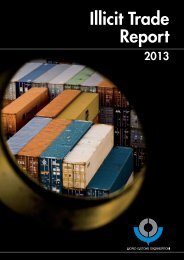monarch-esa-petition-final_61585
monarch-esa-petition-final_61585
monarch-esa-petition-final_61585
You also want an ePaper? Increase the reach of your titles
YUMPU automatically turns print PDFs into web optimized ePapers that Google loves.
Though <strong>monarch</strong>s are found in relatively small, peripheral, and introduced populations in<br />
tropical and subtropical locations outside of North America (see Appendix A), these nonmigrating<br />
populations cannot conserve the genetic diversity and spatial distribution of the<br />
species, are limited in population growth potential such that they cannot substitute for the<br />
abundance of the continental North American population, and are themselves vulnerable to<br />
extirpation.<br />
Numerous species have been protected under the ESA that have large ranges and relatively<br />
abundant population sizes but that have experienced population decline and that face significant<br />
threats to their continued existence. A few examples of such species include the gray bat (Myotis<br />
grisescens), Indiana bat (Myotis sodalis), fat pocketbook mussel (Potamilus capax), piping<br />
plover (Charadrius melodus), Chinook salmon (Oncorhynchus (=Salmo) tshawytscha), and<br />
small whorled pogonia flower (Isotria medeoloides). A species is not required to have declined<br />
to the level of range-wide endangerment in order to qualify for protection under the ESA.<br />
The ESA states that a species shall be determined to be endangered or threatened based on any<br />
one of five factors (16 U.S.C. § 1533 (a)(1)): 1) the present or threatened destruction,<br />
modification, or curtailment of its habitat or range; 2) overutilization for commercial,<br />
recreational, scientific, or educational purposes; 3) disease or predation; 4) the inadequacy of<br />
exisiting regulatory mechanisms; and 5) other natural or manmade factors affecting its contined<br />
existence. The <strong>monarch</strong> is threatened by all five of these factors and thus warrants protection<br />
under the Act:<br />
Factor One: Modification or Curtailment of Habitat or Range<br />
Monarch habitat has been drastically reduced and degraded throughout the butterfly’s summer<br />
and winter ranges and threats are ongoing. Monarch habitat is threatened by, among other things,<br />
pesticide use from genetically engineered, pesticide-resistant crop systems that kill milkweeds<br />
and nectar sources, as well as by development, logging, and climate change.<br />
A primary threat to the <strong>monarch</strong> is the drastic loss of milkweed caused by increased and laterseason<br />
use of the herbicide glyphosate in conjunction with widespread planting of geneticallyengineered,<br />
herbicide-resistant corn and soybeans in the Corn Belt region of the United States<br />
and to planting of genetically-engineered cotton in California. In the Midwest, nearly ubiquitous<br />
adoption of, glyphosate-resistant “Roundup Ready” corn and soybeans has caused a precipitous<br />
decline of common milkweed, and thus of <strong>monarch</strong>s, which lay their eggs only on milkweeds.<br />
The majority of the world’s <strong>monarch</strong>s originate in the Corn Belt region of the United States<br />
where milkweed loss has been severe, and the threat that this habitat loss poses to the resiliency,<br />
redundancy, and representation of the <strong>monarch</strong> cannot be overstated.<br />
Monsanto introduced Roundup Ready soybeans in 1996 and Roundup Ready corn in 1998.<br />
Genetically-engineered herbicide-resistant varieties (nearly all Roundup Ready) now comprise<br />
94 percent of soybeans and 89 percent of all corn grown in the United States. Glyphosate is not<br />
only being applied to vastly more acres than ever before, it is being applied more intensively to<br />
the acres that are treated with it. Between 1995, the year before Roundup Ready soybeans were<br />
introduced, and 2013, total glyphosate use on corn and soybeans rose from 10 million to 204<br />
million pounds per year, a 20-fold increase. Roundup Ready crops have also shifted the<br />
Monarch ESA Petition 7




